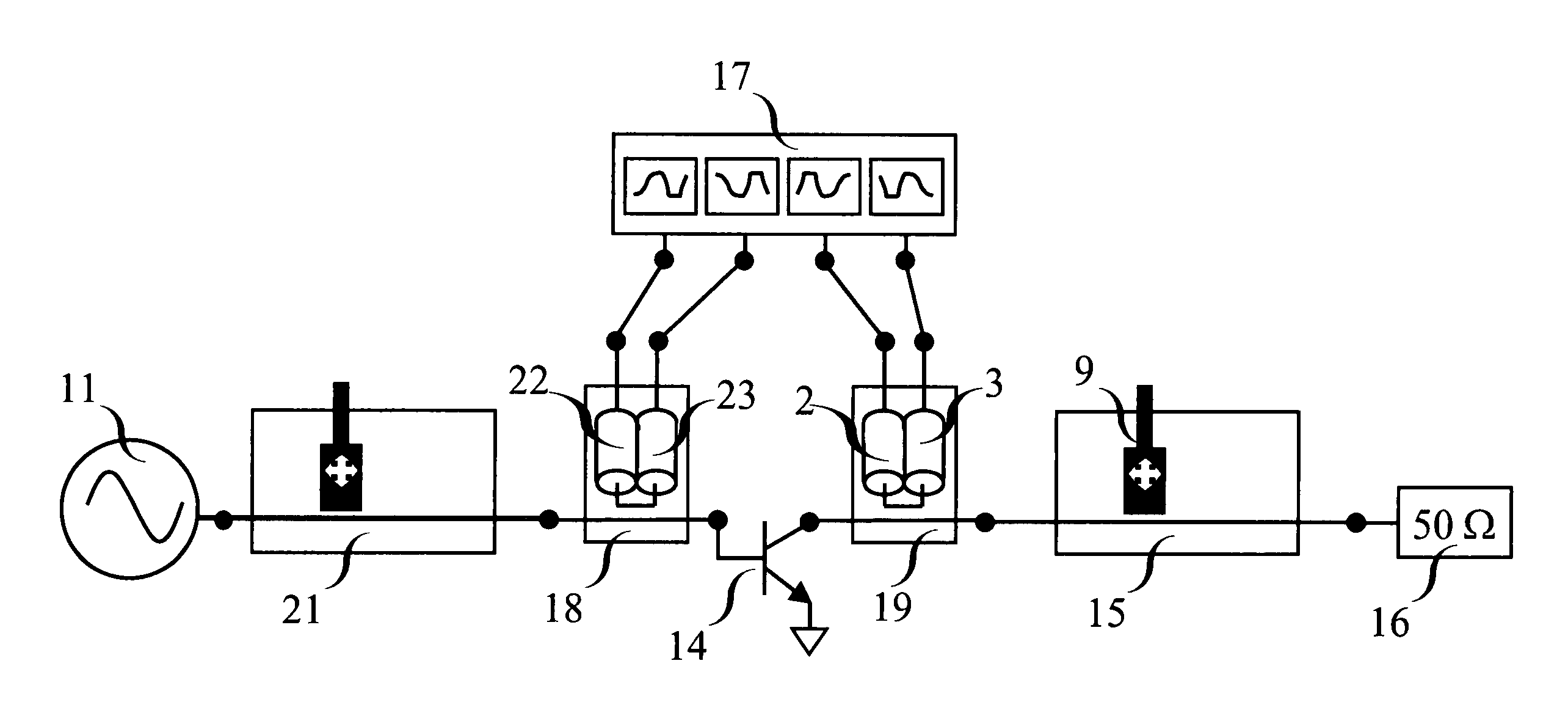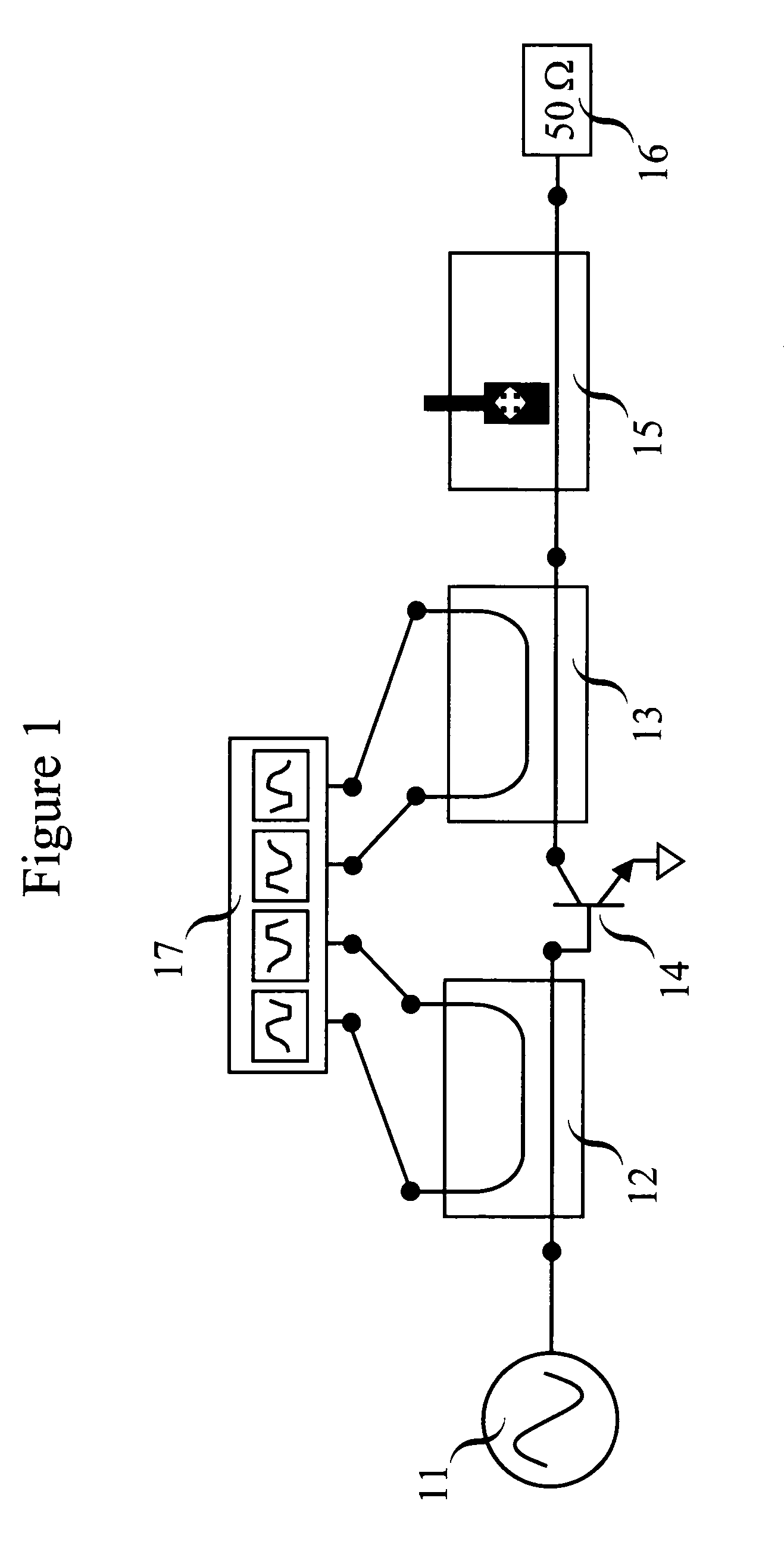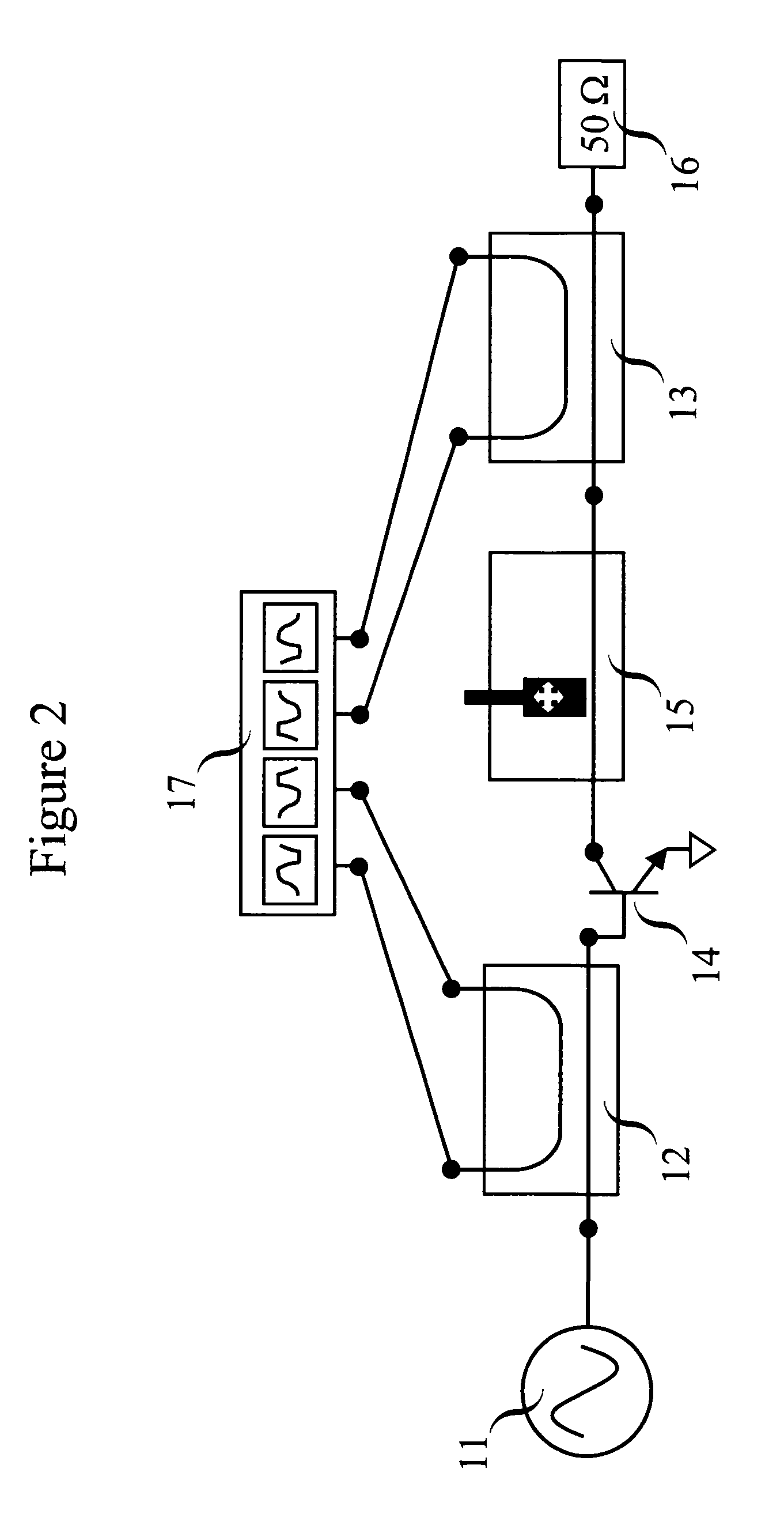Method and an apparatus for characterizing a high-frequency device-under-test in a large signal impedance tuning environment
a high-frequency device and tuning environment technology, applied in the field of incident and reflected waveform measurement, can solve the problems of loadpull measurement methods, transistors b>14, insertion loss of directional resistive bridges, etc., and achieve low-loss directive coupling and avoid energy loss
- Summary
- Abstract
- Description
- Claims
- Application Information
AI Technical Summary
Benefits of technology
Problems solved by technology
Method used
Image
Examples
Embodiment Construction
[0024]The present invention is described in “An improved coupling method for time domain load-pull measurements,” by F. De Groote, J. Verspecht, C. Tsironis, D. Barataud, J. P. Teyssier, 65th ARFTG conference digest, Jun. 12, 2005. A preferred first embodiment is depicted in FIG. 6. The invention relates to a loadpull measurement setup and method whereby one inserts an extremely low loss directive coupling structure 19 between the terminal of a device-under-test 14 and the part 9 of the tuner 15 that generates variable impedance. One hereby avoids the loss of energy caused by the distributed directional couplers 12 and 13 or the resistive bridges, which are used in the prior art as depicted in FIG. 1. The low loss directive coupling structure 19 that is used is a dual directional version of the loop type coupler described in “Criteria for the Design of Loop-Type Directional Couplers for the L Band,” by P. P. Lombardini, R. F. Schwartz and P. J. Kelly, IRE Transactions on MTT, Octobe...
PUM
 Login to View More
Login to View More Abstract
Description
Claims
Application Information
 Login to View More
Login to View More - R&D
- Intellectual Property
- Life Sciences
- Materials
- Tech Scout
- Unparalleled Data Quality
- Higher Quality Content
- 60% Fewer Hallucinations
Browse by: Latest US Patents, China's latest patents, Technical Efficacy Thesaurus, Application Domain, Technology Topic, Popular Technical Reports.
© 2025 PatSnap. All rights reserved.Legal|Privacy policy|Modern Slavery Act Transparency Statement|Sitemap|About US| Contact US: help@patsnap.com



